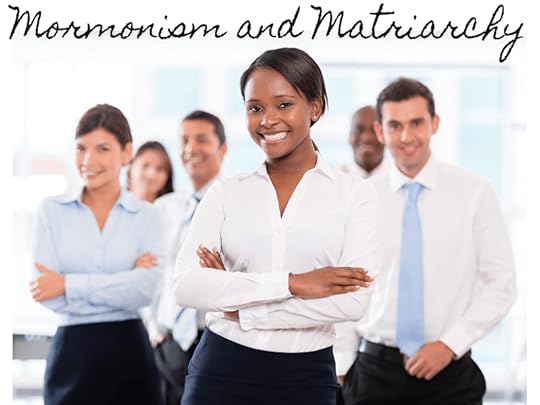Mormonism and Matriarchy

As a late-twenties-something Mormon woman, I sometimes proclaimed that I couldn’t wait to get older, say whatever I wanted, and bully everyone. This was (partly) tongue-in-cheek, but also revealed real frustrations and hurt. I often felt deeply conflicted at church. Intelligent, witty, talented, loving women surrounded me, cared for me, mentored me, and, yet, sometimes I felt small and powerless around them.
I recognized the chain of authority and the benefits of age (I’m a youngest child after all), but I resented my place in it. While I made jokes about my future role in a patriarchal system, I also feared it. Too often, it seemed like the reward for knowing your place as a young woman meant limited control and more social freedom as an older woman.
Another part of me deeply admired how more mature women often appeared self-confident, willing to speak up, and less intimidated by conflict. I looked up to them when they took control, insisted on things going their way, and even highlighted the ridiculousness of young men half their age (or more) exercising authority over them. I recognized power in their role, yet also recognized its limitations in a patriarchal structure.
No matter how strong these women appeared, they never held the ultimate authority. A man needed to approve every expenditure and leadership decision. Rather than stand up to this system, the ward matriarchs built a new hierarchy of women based on age instead. In contrast, when I looked at our male counterparts, their place in the patriarchy started at a young age and remained certain throughout their lives.
What’s my point here? Am I stereotyping all older Mormon women? Am I truly that ungrateful for the women who’ve welcomed, encouraged, empowered, and loved me over the years? Absolutely not. In fact, I see most of what I jokingly referred to as “bullying” as women owning a strength and authority that all LDS women should feel entitled to. An authority that should start at a young age and remain certain throughout our lives.

I just wonder if a matriarchy within the LDS Church could look and feel different if women held more overt power and authority in all aspects of the church? What if…
What if female presidents could make final budget decisions?What if paid childcare allowed LDS women to hold positions of authority at a younger age without stressing over childcare? What if the LDS Church normalized women speaking last?What if women leaders spoke to young men with equal authority and acted as guest speakers some Sundays, as male ward leaders do in Young Women’s? What if ward councils included more women to represent half of the ward population? What if women could count and manage tithing and other funds? What if former presidents were always referred to as “President,” the same way a Bishop is? What if women had quorum titles beginning the year they turned 12, with specific authority and responsibilities valued and recognized by everyone? What if women led and presided over mixed-gender meetings?What if women representing the whole stakes came as authorities speak and represent the Stake Presidency?What if we had Stake Matriarchs?What if motherhood and fatherhood were viewed as equivalents, rather than motherhood and priesthood?What if…
What if matriarchy was the equivalent of patriarchy?



